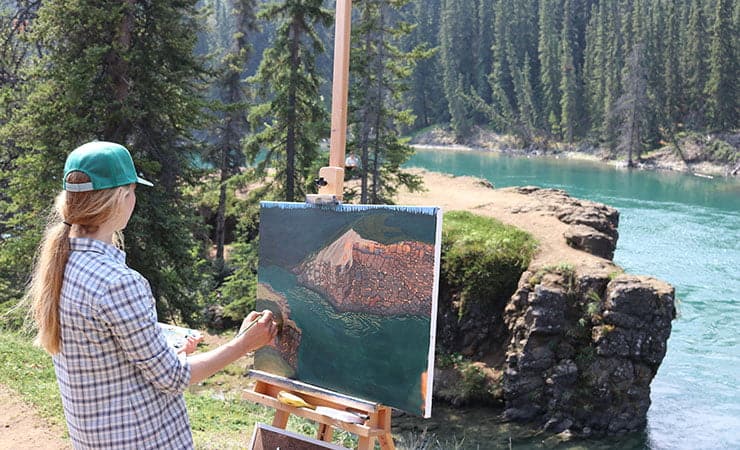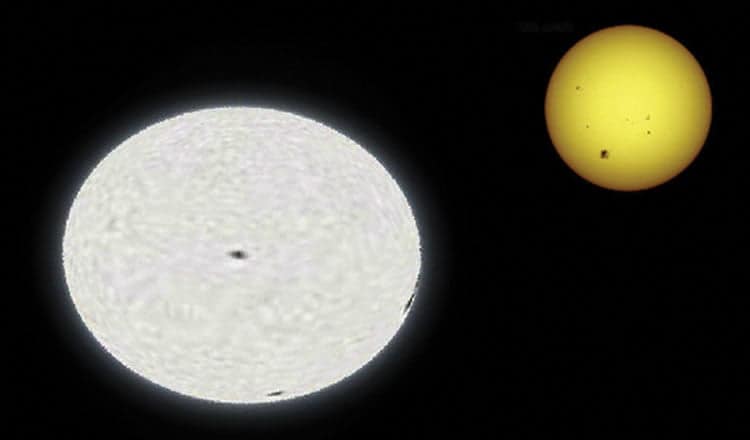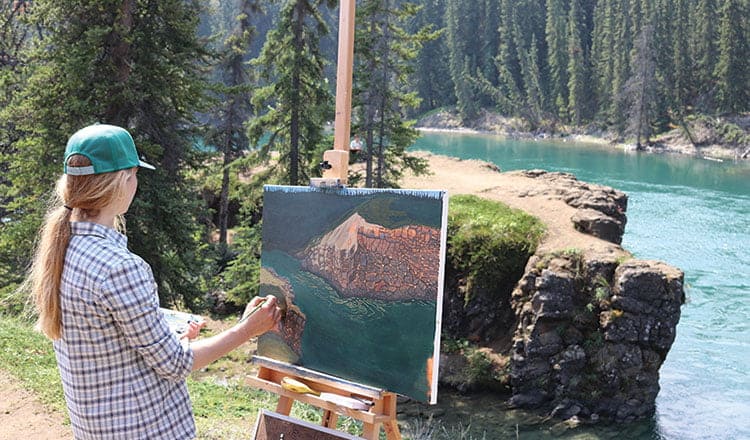Winter has arrived and the weather is starting to stabilize. With clear skies and reasonably warm temperatures, it is time to grab your parka and head outside to explore those amazing Yukon night skies.
So what is there to see, you ask?
Let’s start with the planets. Mercury, the closest planet to the sun, will not be visible from our northern latitudes until the early morning hours on December 22.
At this time Mercury is at its greatest elongation, or greatest distance from the sun. With this little planet’s close orbit to the sun, it usually spends most of its time hidden from our view by the sun’s glare.
To the unaided eye Mercury appears as a small, bright orb in the sky. In spotting scopes and telescopes you will see that Mercury has phases like our moon and Venus. It is very small and bright and always low on the horizon.
The brightest planet, Venus will also be very low in the sky, hanging out with Mercury, and will not be easily visible until the end of the month.
On November 26 and December 26, look for the crescent moon and Venus as they make an awesome pairing in the early evening sky.
Mars, the mysterious red planet, is now slipping into our night skies. Around 1 a.m. Mars rises from the horizon and camps out in the constellation of Leo.
As Mars brightens by month’s end, there will be much to see and explore. An interesting point is that Mars is the only planet in which we can see surface detail, not just clouds and storms.
From polar caps to huge valleys and mountains, Mars is very popular with amateur astronomers. To the unaided eye and binoculars, Mars appears as a large, ruddy-orange orb in the night sky. In a telescope, this little planet comes to life.
There are huge dust storms that are so large they would be classified as global in proportion. You can see these massive dust storms in an eight-inch reflector, as they actually obstruct your view of the surface detail.
Next we move onto Saturn, the ringed gas giant. Found in the early morning sky in the constellation of Virgo, this planet is always a crowd favourite.
To see Saturn you will need a telescope, the larger the better. With fabulous rings and moons aplenty, there is always something to see. On November 22, Saturn, the crescent moon and the bright star Spica, stand side by side, making for an excellent photo opportunity.
The largest planet, Jupiter, is the first planet that saw through a telescope and to this day is still my favourite. This planet can be found in the constellations of Aries and Pisces, located in the south-eastern evening sky. Besides the moon, Jupiter is by far the most brilliant object in the sky making it easily identified.
To the unaided eye Jupiter is a large bright orb, but in binoculars the four moons (Lo, Europa, Ganymede and Callisto) pop into view. Watching the moons orbiting the massive planet is a great sight.
Even in a small telescope, there is much to see. Cloud bands are the most prominent feature for most observers with small telescopes, while larger telescopes identify five or more cloud belts, and, if your timing is right, the Giant Red Spot.
This huge storm is two or three times larger than our planet and has been active for 181 to 346 years.
We also have a cosmic visitor dropping into our night skies. Comet Garradd was discovered by astronomer Gordon J. Garradd in Australia’s Siding Spring Observatory while he looked for near-earth objects.
Comet Garradd is located in the constellation of Hercules and is moving slowly northward until at least the end of January.
The last half of this month will be the optimum time for viewing, when the moon is absent from our skies and the comet is at its highest elevation from the horizon. In 10×50 binoculars it can be seen faintly, as a fuzzy, small Q-Tip. In a wide-field, large-aperture telescope the greenish-blue, short tail can be seen.
Finally, the real bounty of the winter night sky: the constellation of Orion.
With the Orion Nebula so bright that it can be seen with the unaided eye, and the Flame Nebula, a faint mysterious cloud of gas often overlooked by many amateur astronomers, there are always plenty of fascinating deep sky objects to observe.
At this time of year, the Yukon night skies are alive with celestial events such as planets, nebulae, star clusters and the northern lights. Take some time, a pair of binoculars or telescope and a sky chart, and head outside to see for yourself.
As the Miles Canyon Road is now closed, the astronomy club will be meeting Saturday nights – weather permitting – at the Grey Mountain Lookout Point.
Everyone is welcome to come and share the view, hope to see you there.
Clear Skies!
James “Deep Sky” Cackette can be reached at [email protected]. See his photo adventures on Facebook at Yukon Night Skies.




